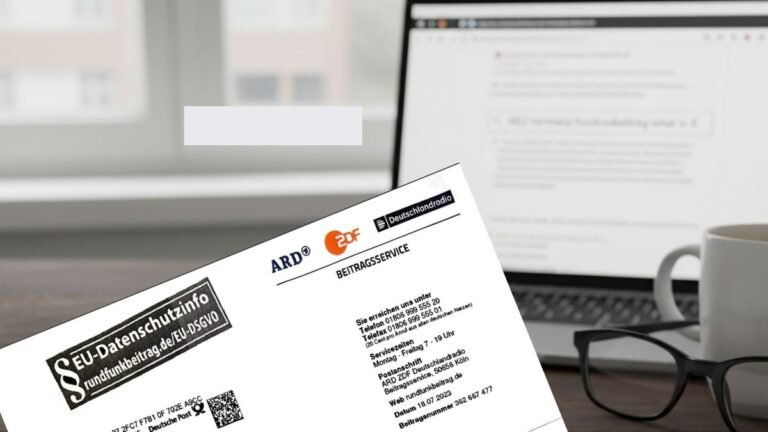Beginner’s Guide to Meditation for Stress Relief: Finding Your Calm in the Chaos

In today’s fast-paced world, stress is a common experience. Whether it’s meeting work deadlines, managing family responsibilities, or keeping up with the constant notifications from our devices, many of us feel overwhelmed. Chronic stress doesn’t just affect our mood—it can lead to serious health issues like heart disease, a weakened immune system, anxiety, and depression. Fortunately, meditation offers a practical and accessible way to manage stress and improve well-being.
Far from being a mystical or religious practice, meditation is a simple technique that anyone can learn. Research shows it activates the body’s relaxation response, helping to counteract the stress-induced fight-or-flight reaction. Studies have demonstrated that meditation can reduce stress hormones like cortisol and improve emotional health, making it a powerful tool for stress relief.
This guide is designed for beginners. You don’t need prior experience, special skills, or hours of free time—just a willingness to try and a few minutes a day. Let’s explore how meditation can help you find calm in the chaos of modern life.
What is Meditation?
Meditation involves focusing your attention on the present moment, often using your breath or body as an anchor, to cultivate calm and awareness. It’s not about stopping thoughts but gently redirecting focus when your mind wanders. This practice, supported by studies, can help manage stress by activating the body’s relaxation response, counteracting the fight-or-flight reaction triggered by stress.
Benefits for Stress Relief
Scientific research indicates meditation can lower cortisol levels, improve emotional resilience, and enhance sleep quality, all of which contribute to stress reduction. A 2014 study found moderate evidence that mindfulness meditation reduces anxiety and depression, which are closely linked to stress. While benefits vary, even short sessions can promote a sense of calm.
How to Start
Begin with 5-10 minute sessions in a quiet, comfortable space. Focus on your breath, noticing its rhythm, and gently return your attention when distracted. Apps like Calm or Headspace can guide you, but the practice is simple enough to do independently.
Understanding Stress and the Body’s Response
To understand how meditation helps with stress, it’s helpful to know what stress does to our bodies. When faced with a stressor—like a tight deadline or an argument—our body triggers the “fight-or-flight” response. This survival mechanism releases hormones like adrenaline and cortisol, increasing heart rate, blood pressure, and energy to prepare us for action.
In today’s world, stressors are often ongoing rather than immediate threats. Chronic stress keeps the body in a constant state of alertness, leading to elevated stress hormones that can disrupt sleep, impair digestion, weaken immunity, and contribute to mood disorders. Over time, this takes a toll on both physical and mental health.
Meditation counters this by activating the “relaxation response,” which lowers heart rate, reduces blood pressure, and decreases stress hormone levels. Regular practice helps train the body to shift from stress to calm more easily, promoting resilience against life’s challenges [Benson, 1975].
What Exactly is Meditation? Debunking Common Myths
Meditation is the practice of focusing your attention on the present moment without judgment. It often involves using an anchor, like your breath or body sensations, to stay grounded. Contrary to popular belief, meditation isn’t about stopping thoughts entirely—it’s about noticing when your mind wanders and gently bringing it back to your focus.
Common Myths About Meditation
- Myth: You need to empty your mind completely.
- Reality: Thoughts are natural during meditation. The practice involves acknowledging them and redirecting focus, not eliminating them.
- Myth: It takes hours to be effective.
- Reality: Even 5-10 minute sessions can provide benefits, especially for beginners.
- Myth: You need to sit in a specific posture.
- Reality: Comfort is key. You can meditate sitting, lying down, or even walking, as long as you’re alert.
- Myth: It’s a religious practice.
- Reality: While rooted in spiritual traditions, meditation can be secular and focused on health benefits.
Meditation is adaptable to any lifestyle, making it an inclusive practice for people of all ages and backgrounds.
Science-Backed Benefits of Meditation for Stress Relief
Meditation’s effectiveness for stress relief is supported by a growing body of research. A 2014 systematic review found moderate evidence that mindfulness meditation programs can reduce anxiety, depression, and pain—conditions closely tied to stress. Here are some specific benefits:
| Benefit | Description |
|---|---|
| Reduced Stress Hormones | Lowers cortisol levels, mitigating the physiological effects of stress. |
| Improved Emotional Regulation | Enhances the ability to manage emotions and respond calmly to stressors. |
| Increased Self-Awareness | Helps identify stress triggers and patterns. |
| Enhanced Focus | Improves attention span, reducing feelings of being overwhelmed. |
| Better Sleep | Promotes better sleep quality, aiding stress management. |
| Lower Blood Pressure | May improve cardiovascular health by reducing blood pressure. |
| Increased Well-Being | Fosters feelings of calm and improves overall mental health. |
While individual results vary, these benefits make meditation a valuable tool for managing stress in a holistic way.
Getting Started: Your First Meditation Session (Practical Steps)
Starting a meditation practice is straightforward. Follow these steps for your first session:
- Set Aside Time: Aim for 20 minutes, but 5-10 minutes is fine for beginners. Choose a consistent time each day to build a habit.
- Find a Comfortable Space: Sit on a chair, cross-legged on a mat, or lie down (if you won’t fall asleep). Ensure an upright posture for alertness.
- Minimize Distractions: Choose a quiet spot. Earplugs or soft background noise can help if silence isn’t possible.
- Close Your Eyes or Soften Your Gaze: Closing your eyes reduces visual distractions, or use a soft downward gaze if preferred.
- Focus on Your Breath: Notice the natural rhythm of your inhale and exhale. Silently say “breathe in” and “breathe out” to stay focused.
- Handle Wandering Thoughts: Your mind will wander—it’s normal. Gently redirect your focus to your breath without frustration.
- End Gently: After your session, sit quietly for a moment, then slowly open your eyes to transition back to your day.
Think of your mind like a puppy in training—patience and consistency are key to progress.
Simple Meditation Techniques for Beginners (Step-by-Step Instructions)
Here are five beginner-friendly meditation techniques to help relieve stress:
1. Mindfulness Meditation
- Steps: Sit comfortably, close your eyes, and focus on your breath. Notice the sensation of air entering and leaving your nostrils. When thoughts arise, acknowledge them and return to your breath.
- Duration: 5-10 minutes.
- Why It Works: Trains the mind to stay present, reducing stress-related rumination.
2. Body Scan Meditation
- Steps: Lie down or sit comfortably. Start at your toes, bringing awareness to each body part up to your head. Notice sensations without judgment.
- Duration: 10-15 minutes.
- Why It Works: Releases physical tension and promotes relaxation.
3. Mantra Meditation
- Steps: Choose a calming word like “peace.” Sit comfortably, close your eyes, and silently repeat the mantra to anchor your focus.
- Duration: 5-10 minutes.
- Why It Works: Keeps distracting thoughts at bay.
4. Walking Meditation
- Steps: Walk slowly in a quiet space. Focus on the sensation of your feet touching the ground and your breath. Redirect focus when distracted.
- Duration: 10 minutes.
- Why It Works: Combines movement with mindfulness, ideal for restless beginners.
5. Loving-Kindness Meditation
- Steps: Sit comfortably, close your eyes, and repeat phrases like “May I be happy; may I be healthy” for yourself, then extend to others.
- Duration: 5-10 minutes.
- Why It Works: Fosters compassion, reducing negative emotions.
Integrating Meditation into Your Daily Life
To make meditation a lasting habit, consider these strategies:
- Start Small: Begin with 5-10 minute sessions to avoid feeling overwhelmed.
- Be Consistent: Daily practice, even briefly, is more effective than sporadic long sessions.
- Experiment: Try different techniques and times of day to find what suits you.
- Anchor to Habits: Meditate after a daily routine, like brushing your teeth or having coffee.
- Use Technology Wisely: Apps like Calm or Headspace can guide you, but aim for independent practice over time.
- Be Patient: Progress takes time, and some days will feel harder. Treat yourself with kindness.
- Avoid Perfectionism: The goal is awareness, not a perfectly still mind.
Troubleshooting Common Challenges
Beginners often face obstacles when starting meditation. Here’s how to address them:
| Challenge | Solution |
|---|---|
| Busy Mind | Accept wandering thoughts as normal. Gently return focus to your breath. |
| Restlessness | Try shorter sessions or walking meditation. Adjust posture for comfort. |
| Falling Asleep | Meditate sitting up or at a more alert time of day. |
| Lack of Time | Practice “mini-meditations” (e.g., a few deep breaths) during breaks. |
| Frustration | Take a break and try again later. Remind yourself that meditation improves with practice. |
Beyond Basic Meditation: Exploring Further
Once comfortable with basic techniques, you can explore other practices to deepen stress relief:
- Mindfulness-Based Stress Reduction (MBSR): An 8-week program combining meditation and yoga to manage stress.
- Loving-Kindness Meditation: Cultivates compassion for self and others.
- Walking Meditation: Focuses on mindful movement.
- Yoga and Tai Chi: Combine physical activity with mindfulness for holistic benefits.
Explore reputable meditation apps, mindfulness books, or local meditation groups for further learning.
Conclusion: Your Journey to a Calmer You
Meditation is a powerful, science-backed tool for managing stress, offering a path to calm in a chaotic world. By understanding stress, practicing simple techniques, and building a consistent habit, you can experience benefits like reduced stress hormones, better sleep, and improved emotional resilience. Your meditation journey is personal—embrace it with patience and curiosity, and each step will bring you closer to a calmer, more centered you.
Sources:
- APA: Stress Effects on the Body
- Mayo Clinic: Meditation for Stress Reduction
- JAMA Internal Medicine: Meditation for Psychological Stress
- Harvard Health: Understanding the Stress Response
- American Institute of Stress: Effects of Stress
- Mindful.org: Guide to Meditation
- Verywell Mind: Meditation for Stress Relief
- Healthline: 12 Science-Based Benefits of Meditation
- NCCIH: Meditation and Mindfulness Effectiveness
- NHS Every Mind Matters: Beginner’s Meditation Guide
- Calm Blog: Meditation Techniques for Stress
To get more useful blog post like these one join the list!






